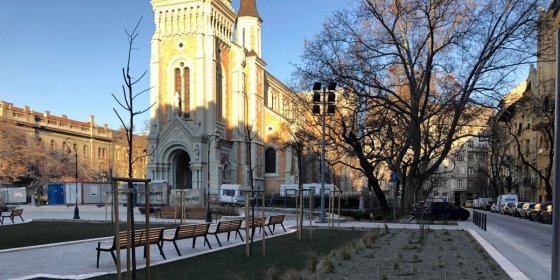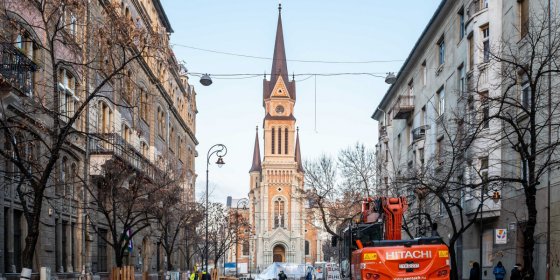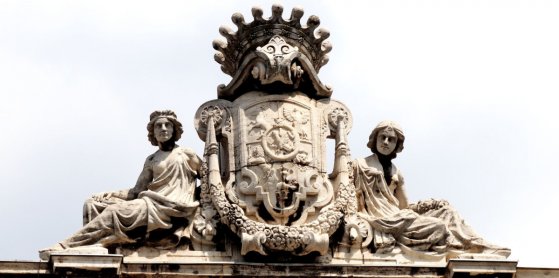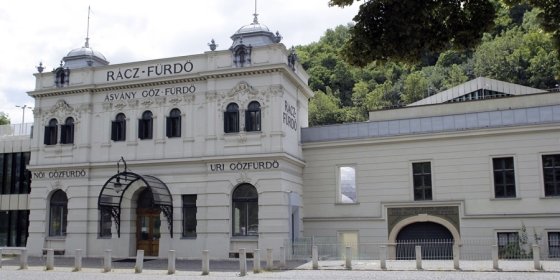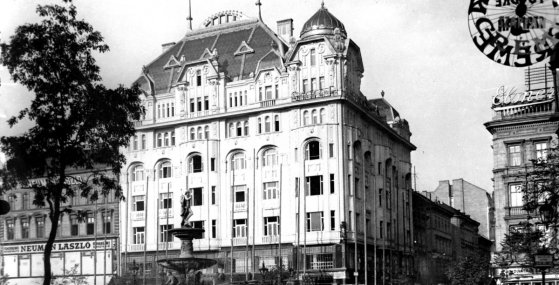 The „intertwined history” of the bridges and the city of Budapest
Which ideas and events have shaped the fate of bridges of Budapest and the cityscape? Alongside many other interesting facts, this question is also answered this newly published book by the Budapest City Archives, which introduces the history of bridges in Budapest.
The „intertwined history” of the bridges and the city of Budapest
Which ideas and events have shaped the fate of bridges of Budapest and the cityscape? Alongside many other interesting facts, this question is also answered this newly published book by the Budapest City Archives, which introduces the history of bridges in Budapest.
Ybl Miklós
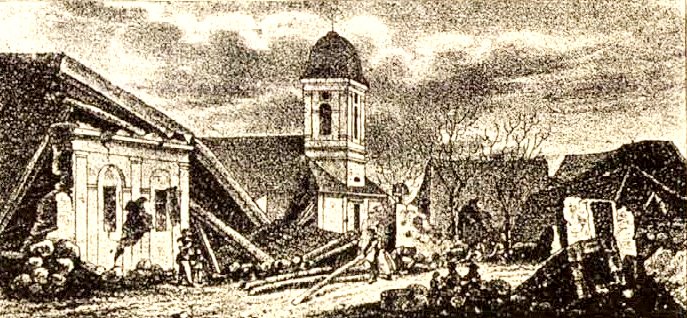 In the footsteps of an antiquity in Ferencváros - the first church on Bakáts Square was built 200 years ago
In the footsteps of an antiquity in Ferencváros - the first church on Bakáts Square was built 200 years ago
August 17, 2022 at 10:18 AM
The Bakáts Square church is one of Miklós Ybl's early masterpieces, which since 1879 has not only been the most important building in the square, but also a symbol of Ferencváros. We have been admiring its renovated exterior for years, and the reconstruction of the interior spaces will be completed in the foreseeable future. Probably only a few people know that the church has been operating since 1822 on the 9th District's best-known square. It was built 200 years ago in such a way that both the commissioner and the users knew that it would only serve the Catholic population of the area until it was replaced by a permanent church. Although the "exchange" was not without difficulties, until 1865 it was the centre of faith for the Catholics of "Franzstadt".
The renovated Bakát Square was handed over
January 24, 2022 at 7:00 PM
The renovation of the main square of Ferencváros, Bakáts square, has been completed. The development of the space was initiated in 2016 by the 9th district local council, and by 2018 the plans were born and the implementation was prepared by the experts on behalf of the local council Plants, benches, chess and mill tables and drinking wells were installed on the square formed in the 19th century.
The renovation of Bakáts Square can be completed by the beginning of next year
December 12, 2021 at 10:00 AM
The renovation of the main square of Ferencváros, Bakáts tér, was initiated in 2016 by the 9th district government. Plans were made for 2018 and implementation was also prepared, but after the 2019 elections, the program was rethought, so work began only this year. The square was formed in the 19th century in Inner Ferencváros, where plants, benches, a drinking fountain, mill and chess tables are also installed.
Lion, sparrowhawk, crane – Ancient symbols from coats of arms tell the story of the past of noble families in the Magnates' Quarter
June 17, 2021 at 9:30 AM
Although in 1947, the communist regime banned the use of noble forenames and badges, including private coats of arms, fortunately, these were not removed from the former aristocratic palaces. Ancient symbols, often dating back centuries, referred to the owner's family, their role in Hungarian history and also served aesthetic purposes on the buildings. In the second half of the 19th century, the Hungarian aristocracy enjoyed building around the National Museum, so several buildings with family coats of arms and their motifs can be found in the quarter. These can be seen in the palaces of the Festetics and Károlyi families in Pollack Mihály Square.
Rác Bath sold – Budapest bath operator wins auction
May 31, 2021 at 7:00 PM
The story of Rác Bath has reached another milestone, after standing empty for ten years since its renovation. During the liquidation procedure, Budapest Gyógyfürdői és Hévizei Zrt. (BGYH) was the only bidder to buy the spa and the hotel built at the starting price of about five billion HUF. However, the opening will have to wait, as the building needs further renovations.
A forgotten side of Kálvin Square – Lost buildings: The Geist and Pintér Buildings
March 2, 2021 at 9:00 AM
Kálvin Square is a transport hub, one of the busiest and most popular squares in Budapest. Museums, restaurants and hotels fill the nearby streets, but the square itself is also of interest. At the junction of Kecskeméti Street and Kálvin tér, where the huge blocks of the Korona Hotel now stand connected by a bridge, there were once two beautiful residential buildings houses. A look at their history is worthwhile.
More articles
 The „intertwined history” of the bridges and the city of Budapest
Which ideas and events have shaped the fate of bridges of Budapest and the cityscape? Alongside many other interesting facts, this question is also answered this newly published book by the Budapest City Archives, which introduces the history of bridges in Budapest.
The „intertwined history” of the bridges and the city of Budapest
Which ideas and events have shaped the fate of bridges of Budapest and the cityscape? Alongside many other interesting facts, this question is also answered this newly published book by the Budapest City Archives, which introduces the history of bridges in Budapest.
 The Bridge Report, which brought a turning point in the history of Budapest
A travel report that changed the history of Pest and Buda, as well as Hungary. The little book contributed to the change of half a thousand years of legal customs and the implementation of an investment of unprecedented size and technical quality. This book was The Bridge Report [Hídjelentés in Hungarian].
The Bridge Report, which brought a turning point in the history of Budapest
A travel report that changed the history of Pest and Buda, as well as Hungary. The little book contributed to the change of half a thousand years of legal customs and the implementation of an investment of unprecedented size and technical quality. This book was The Bridge Report [Hídjelentés in Hungarian].
 Drama on the university wall - The heroic monument was planned 95 years ago
In the constant hustle and bustle of the Egyetem Square in Pest, the students may not even notice the monument that decorates the short section of wall between the church and the central building of ELTE. However, it commemorates their predecessors, the heroes who fought for their country in World War I, and those who heroically helped them. The first design of the dramatically collapsing soldier was born in 1928, ninety-five years ago.
Drama on the university wall - The heroic monument was planned 95 years ago
In the constant hustle and bustle of the Egyetem Square in Pest, the students may not even notice the monument that decorates the short section of wall between the church and the central building of ELTE. However, it commemorates their predecessors, the heroes who fought for their country in World War I, and those who heroically helped them. The first design of the dramatically collapsing soldier was born in 1928, ninety-five years ago.

